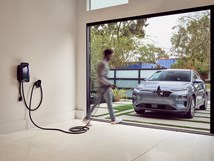Ford: No Fully Autonomous Cars Until 2026
Consumers aren’t likely to be able to buy their own completely automated vehicles until at least 2026, even though such vehicles may come into use by ride-sharing services by 2021.
Consumers aren’t likely to be able to buy their own completely automated vehicles until at least 2026, even though such vehicles may come into use by ride-sharing services by 2021.
So says Ken Washington, Ford Motor Co.’s vice president of research and advanced engineering in a speech to attendees of WCX, the annual SAE International conference in Detroit. He predicts “relatively gradual” adoption by the public.
Ford is developing a self-driving vehicle that won’t have a steering wheel or foot pedals for use by ride-share services in 2021. The so-called “level 4” autonomous vehicle will be able to drive itself with no human intervention—but only within a fixed area or along predetermined routes.
Washington says it could take as long as 10 more years for carmakers to offer “level 5” vehicles that can operate automatically in virtually any driving situation. Still, he asserts the goal isn’t just science fiction. “This is something we’re going to make happen,” he asserts. “Others will too.”
RELATED CONTENT
-
When Automated Production Turning is the Low-Cost Option
For the right parts, or families of parts, an automated CNC turning cell is simply the least expensive way to produce high-quality parts. Here’s why.
-
Multiple Choices for Light, High-Performance Chassis
How carbon fiber is utilized is as different as the vehicles on which it is used. From full carbon tubs to partial panels to welded steel tube sandwich structures, the only limitation is imagination.
-
Increasing Use of Structural Adhesives in Automotive
Can you glue a car together? Frank Billotto of DuPont Transportation & Industrial discusses the major role structural adhesives can play in vehicle assembly.








